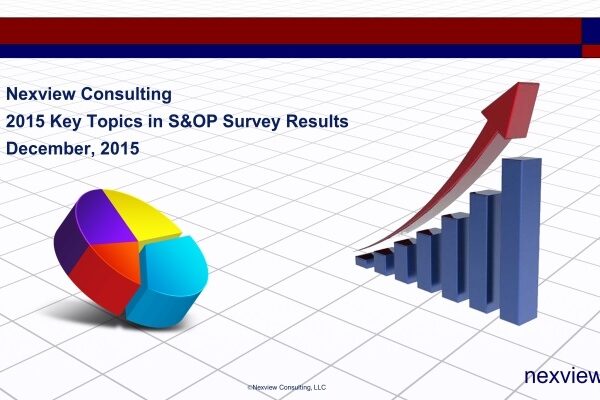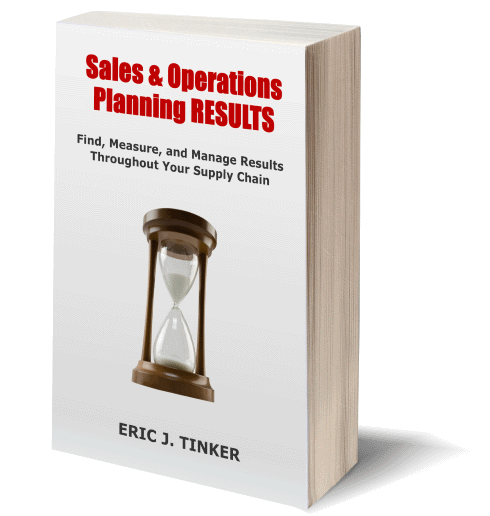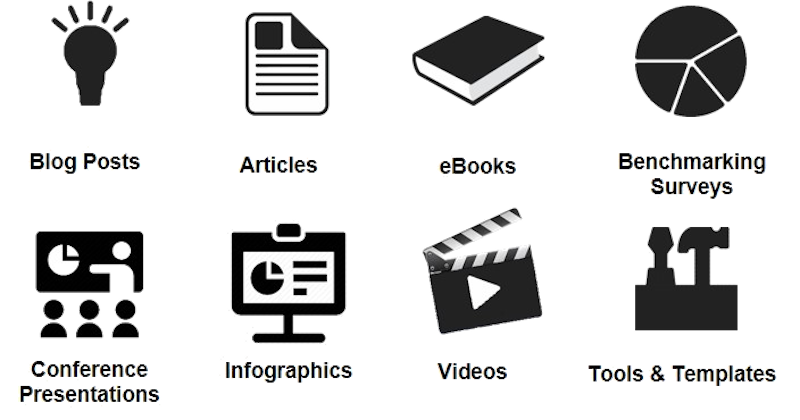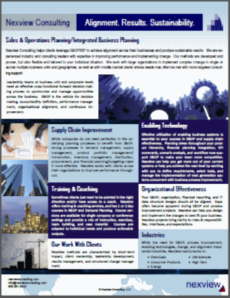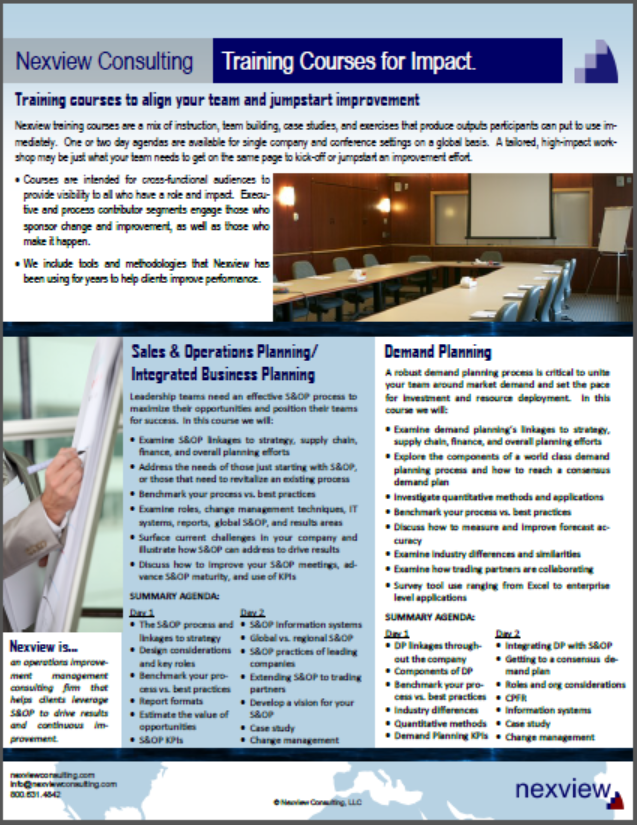
The terms Sales & Operations Planning (S&OP), and Integrated Business Planning (IBP) are more and more becoming interchangeable. As S&OP has evolved to encompass more than just balancing supply and demand at an aggregate or product family level, the term IBP is becoming more widely used and is perhaps better suited to non-manufacturing environments. Hopefully leaders in all industries will appreciate that manufacturing companies have offered much in the way of improving collaboration and operations. Sophisticated products supported by complex global supply chains and information systems are now usually available to demanders who are willing to pay what is usually a competitive price. It takes planning to execute strategies and cross functional coordination to make this happen, as well as to respond when the world doesn’t go according to plan. Why not apply some leading techniques from the manufacturing industries where it makes sense?
Any business that has customers to serve, has assets and resources to deploy, and has to make and follow a financial plan is a good candidate for IBP. Sounds like most businesses doesn’t it? Leadership from the financial function is also on the rise, often times even more so in non-manufacturing environments where finance often plays a large role in business planning. The cases of IBP in non-manufacturing applications are increasing. Retail, distribution, and engineer to order companies are becoming more prevalent users, and we’ve worked with oil & gas exploration & production companies to design and implement IBP. While there are certainly some differences relative to manufacturing applications, the majority of concepts and best practices are transferable across industries. Certainly all of the people issues (the toughest!) are transferable.
IBP is a cross-functional collaborative planning process that enables a company to plan customer demand, deploy the necessary corresponding resources, and integrate financial planning over an intermediate term planning horizon (typically 3 – 18 or 24 months out). Three months only? Yep, it works operationally for some businesses, not really long enough for financial integration though. IBP enables Sales, Operations, Finance, Engineering, and other groups that make sense for your organization to get on the same page, working to a common plan, changing that plan (forecast), when conditions require, and managing gaps to budget, in collaborative way. There’s much to write on IBP, so for this article, I’ll focus on the concept of the “One Plan” and the considerations that go into it.
“One Plan”means looking at a set of inter-related “key business planning drivers” that make sense to look at together, calendarized in monthly buckets, over a horizon that covers your longest lead time items, adequate for financial forecasting, and far out enough to do something about variances to budget before it’s too late. The key functions in your organization confirm their respective parts of the plan in separate meetings, and then come together to confirm the entire rolled-up plan and collaboratively make cross-functional decisions that will affect the planning drivers over the planning horizon. This is not changing the budget, but rather the future forecast for comparison and course correction. The rolling monthly forecast can than provide the basis for the next budget cycle.
Key Business Planning Drivers should be able to be expressed in units (volume) and dollars. Volume units are necessary to plan the operations, that in turn, obviously need to relate to dollar outcomes. Volume values of Key Business Planning Drivers may be things like: sales, resource quantities necessary to deliver those sales, backlog quantities, no. of projects, man-hours, volume of loans, hotel occupancies, or other key drivers in your business. IBP reports should also present a view of the planning drivers that is high level enough to stay out of detailed discussion of activity this month. Dollar versions of the plan typically aren’t full P&L. Sales parameters are naturally represented as revenue dollars, and the resource-oriented parameters are typically represented at the cost of “goods” or gross margin level. Finance teams can add the rest of the cost picture as desired or the forward IBP report view can be used in conjunction with your typical monthly full P&L review.
The power of looking at key business planning drivers in monthly buckets over your planning horizon, not only is to compare historical performance vs. budget, but also to determine how these quantities will change with each other when an issue arises and a decision as to how to proceed is made collaboratively across functions. For example, if a software company is going to be late on a new release, how might that affect future revenues, developer hours, and the backlog or prioritization of other projects? What needs to happen to these drivers to get back on track?
Thus, a calendarized plan of key business planning drivers provides the basis for your team to discuss scenarios, make cross functional decisions, and quantify the resulting outcome on your financials. Please see other articles on the Nexview Consulting web site for many other best practices and tips on implementing S&OP/IBP in your organization.

